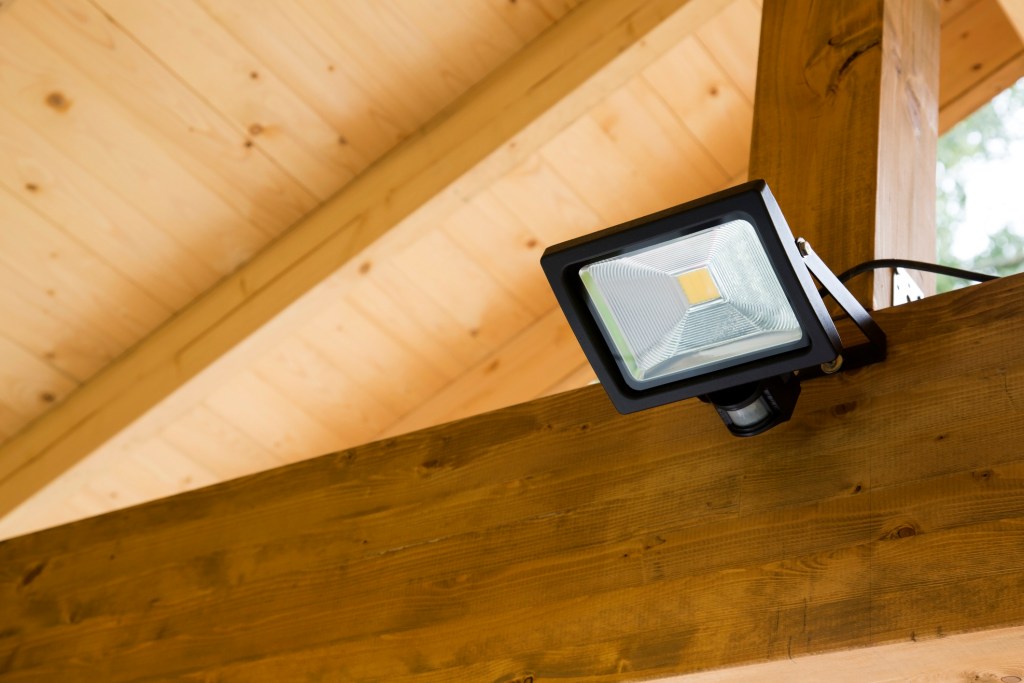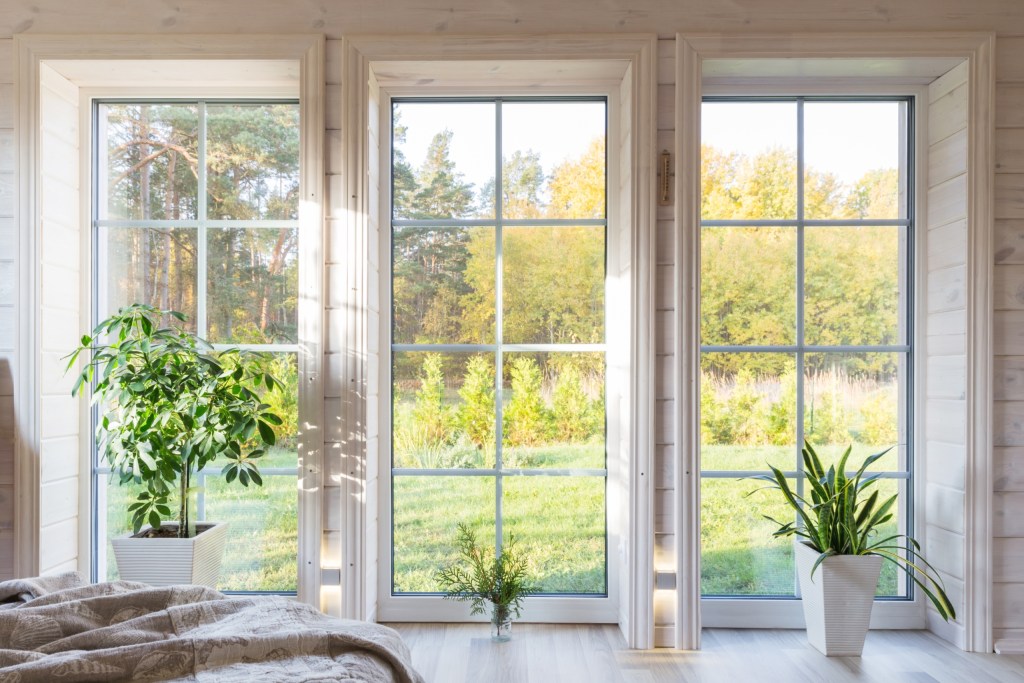When it comes to the security of your home and family, it may seem like a given that more is better. While you want your home security system to be as safe and effective as possible, too many security elements in one home can easily become a nuisance. When it comes to installing motion sensors, the idea is to install them wisely, but not necessarily liberally.
So, what are the downfalls of having too many motion sensors? And how many home security motion sensors are too many? We’ll break it down for you, starting with the drawbacks of excessive motion sensors.

Disadvantages of too many motion sensors
False alarms
Motion sensors are certainly known to go off when there’s no threat. False alarms occasionally happen, whether it’s due to a faulty or overly sensitive detector, your teenager getting up for a midnight snack, or your nocturnal cat climbing around on your furniture. While false alarms are inevitable, realize that the more motion sensors you have around your home, the more likely false alarms will be. Keep the nuisance of ill-timed false alarms at a minimum by installing only the sensors you absolutely need.
Intensive installation
Installing motion sensors is not necessarily a difficult task. Most window sensors, for example, can be quickly installed in just a few minutes with no tools and minimal sweat. Motion detectors are a bit more labor-intensive to install, depending on where you’re mounting them, but even these devices require minimal tools and time to get up and going. While individual motion sensors are a breeze to get hooked up, the more you have to install, the more time and energy you’ll have to spend on your overall home security startup.
Increased cost
Many home security packages are fairly affordable and include a supply of window sensors and motion detectors. If you determine that the included devices are too few, you can certainly purchase additional window or motion sensors. However, as you add to your package, each additional device adds dollars to your home security project. If you get overzealous about motion sensors in your home, you’ll watch your overhead cost for this project rise exponentially.

How many motion sensors do you actually need?
Considering the downfalls of having too many motion sensors, it can be difficult to determine how many you actually need. Motion sensors monitor a fairly large space, like a standard-sized living room, so you’ll generally never need multiple sensors in one room. They typically detect movement in the monitored space, or they can even detect body heat using infrared technology.
Depending on the layout of your home, it’s a good idea to have motion sensors in larger, shared spaces on the lower level — such as the kitchen, living room, or den — and to have the device pointed toward the room’s entryway. If your home’s layout requires entry through one space to get to another, you typically only need a motion sensor in the room that is accessed first. Additionally, if you decide not to install window sensors on the upper level, you could increase security on that level by installing a motion sensor in a shared hallway.
Here are some common areas to think about:
Entryways and high-traffic areas
Any area of your house that you must walk through to enter the rest of the house is a good location for installing motion detectors. This includes parlors, mudrooms, or just a section of the hallway that houses your front door. If you have to walk through that area to get to the rest of the house, so does an intruder. Having motion sensors in high-traffic areas will give you a bit of a head start on an intruder before getting to the room that is their destination.
Bedrooms
You’re the most vulnerable when you sleep, so having motion sensors that monitor your bedrooms is necessary. You don’t necessarily need a motion sensor inside every bedroom, though. Particularly if your bedrooms are on upper floors, an intruder will likely not be able to gain access to your bedrooms from the outside. This means they will have to access the hallway outside of the bedrooms first before entering the bedrooms themselves. A motion sensor in a corner in the hallway on an upper floor will provide you with ease of security while avoiding the issue of false alarms when you get up in the middle of the night.
Basement
You may not think about putting motion sensors in the basement, but this is a common entry point for intruders. There are often accessible windows that allow them to bypass entryways and the cameras and sensors that are often equipped on those entryways. Depending on the size and layout of your basement, you may only need one motion sensor. Even if your basement is larger, if it’s fairly open, one sensor in the corner of the room could monitor a 90-degree angle and detect motion up to 40 feet away. When you set up a motion sensor in your basement, be sure there are no items stored in front of it so that it can monitor the entire space.
Any room with valuables
If you have a gaming room, a home office, or a den with valuable electronics, a safe, or other items of value, it’s a good idea to have a motion sensor installed in each of these rooms. If you have a particularly valuable item, like an original painting or a state-of-the-art television, you could even set up a motion detector behind the item. This will cause the motion sensor to be ineffective until the valuable item is moved from its place, so you will only be alerted if the item is being tampered with.

Do I need a window sensor on every window?
Window sensors typically have the sensor installed on the stationary window pane and a magnetic element installed on the portion of the window that moves when opened. They do not monitor motion around the window, and they do not use infrared technology to monitor bodily presence in the space around as motion sensors do. The primary function of a window sensor is to detect when the window is opened. With that being said, window sensors need to be installed on entry doors and windows that can be entered from the outside. If an intruder cannot physically access your upper-level windows, there is no need to equip them with window sensors.
Placing the motion sensors at home
You can have all the motion sensors in the world, but if you don’t place them properly, they won’t make a difference when it comes to protecting your home.
Ideal placement of motion sensors
An intruder could avoid tripping a motion sensor if they can see where it’s placed. That’s why it’s beneficial to install your motion sensors in areas that hide them. Some good areas to consider are above doorways or among decorative pieces on a shelf.
Keep in mind that the ideal position for a motion sensor is in the corner of a room to monitor a larger portion of the room and reduce the number of sensors needed to be effective. You also want your motion sensor to have a wide range of view with as few blind spots as possible, so installing it between six and eight feet above the ground is the ideal height.
Poor placement of motion sensors
On the other hand, some areas are not ideal for motion sensors to be placed. For example, areas where the air temperature spikes could produce false alarms since many motion sensors have infrared technology that detects body heat. Avoid placing sensors next to heating vents, radiators, or near windows that get a lot of direct sunlight to reduce the chances of false alarms.
Putting together a customized home security system can be a challenge. You have to find a balance between keeping your home at a security level that you’re comfortable with and preventing overkill that could be a big headache. The last thing you want is to invest heavily in your home security system just to have it be ineffective, counterproductive, or labor-intensive. Installing motion sensors doesn’t have to be an enormous project with an excessive amount of devices, as long as you select their locations with wisdom. You can actually keep your family safe with a surprisingly minimal amount of effort.



